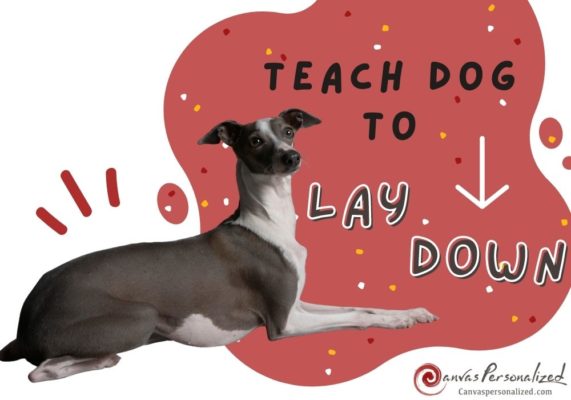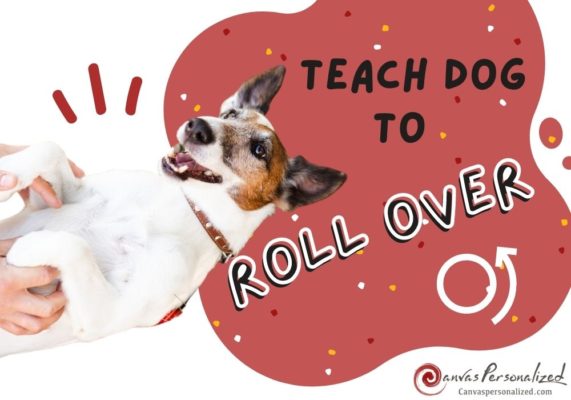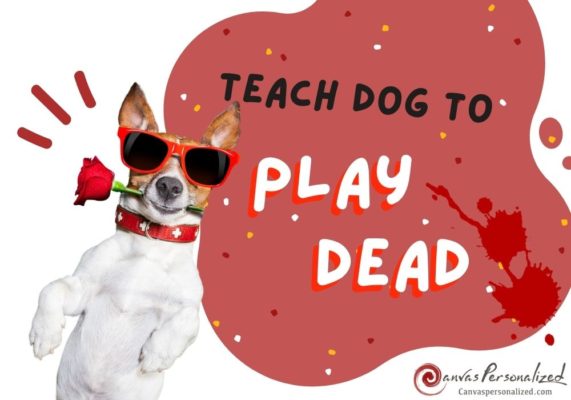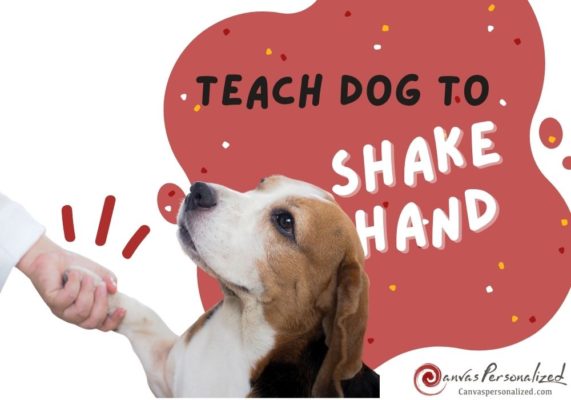Imagine capturing your dog’s pure joy in a single, adorable “smile.” Yes, it’s possible to teach a dog to smile! With a little patience and positive reinforcement, you can teach your furry friend this heartwarming trick. In this step-by-step guide from Canvas Personalized, we’ll walk you through the process of dog smiling training, even if you’re a beginner. Get ready for endless photo ops and heartwarming moments with your smiling pup!
1. Can Dogs Really Smile? Understanding the Behavior
While dogs can’t grin from ear to ear like humans, they can express a similar emotion through a relaxed, open-mouthed facial expression often referred to as a “dog smile.” This endearing look usually involves slightly parted lips, a relaxed jaw, and sometimes even a gentle panting. It’s often accompanied by soft eyes and a wagging tail, indicating a happy and contented state.
The dog smile isn’t exactly the same as ours, but it communicates a similar message: happiness, joy, and a desire to connect. Some dog breeds are naturally more prone to showing this expression, such as Huskies, Samoyeds, and other breeds known for their friendly and expressive nature. However, with patience and positive reinforcement, you can teach almost any dog to show you their pearly whites on command.
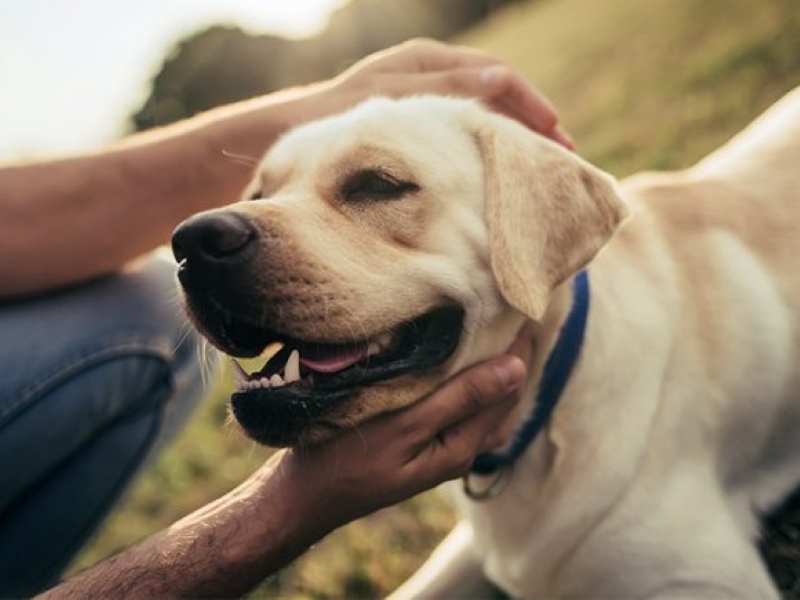
Did You Know?
While a dog’s “smile” is a heartwarming sight, it’s crucial to distinguish it from similar expressions that convey different emotions. Remember, bared teeth don’t always equal happiness.
If your dog’s ears are pinned back and they’re crouching or leaning away, it’s likely a fearful grin, not a joyful one. Relaxed ears typically accompany a genuine, happy smile. However, if their ears are forward and their body is tense and leaning towards you, they’re likely snarling out of anger or aggression.
Always consider your dog’s entire body language to ensure their “smile” is truly positive. If you notice any signs of stress or discomfort, discourage others from reinforcing the behavior. Instead, assess the situation and address any potential triggers that might be causing your dog’s fear or anger. By understanding their body language, you can help your furry friend feel safe and happy again.

2. How to Teach a Dog to Smile
Step 1: Prepare for training
Gather your dog’s favorite treats and a clicker. I’ve found that using a clicker is a game-changer when it comes to capturing the exact moment my dog smiles. The clicker sound provides instant feedback, making it easier for them to understand which behavior is being rewarded.
Step 2: Trigger the Smile
Gently touch your dog’s whiskers or cheeks. This often prompts them to open their mouth slightly or raise their jowls, exposing their teeth.
Step 3: Immediate Click and Treat
If your dog naturally shows their teeth in response to the touch, click your clicker (or use a verbal marker like “yes!”) and give them a treat. This positive reinforcement reinforces the behavior.
Step 4: Assisted Smile (if needed)
If your dog doesn’t automatically show their teeth, gently and slowly lift their upper lip to expose their teeth.
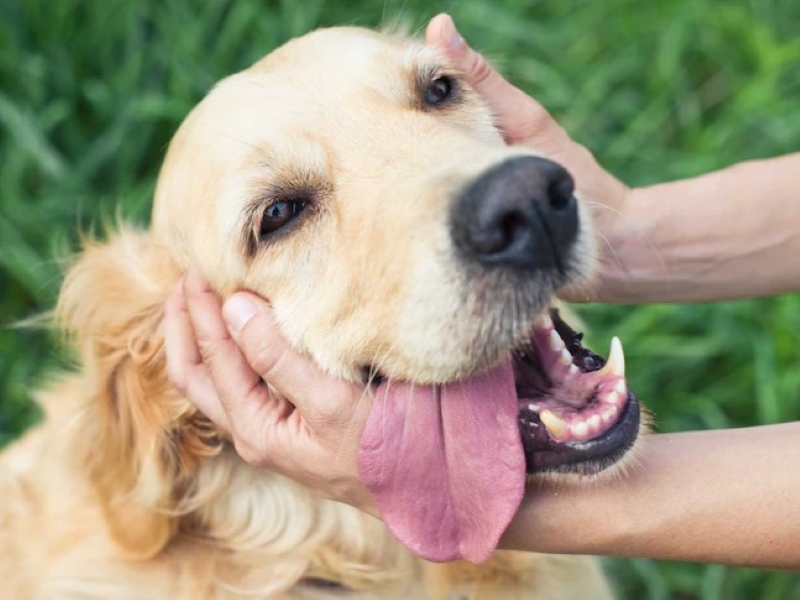
Step 5: Click and Reward Again
Since you achieved the desired outcome, click and reward your dog with another treat. This strengthens the association between the action and the reward.
Step 6: Introduce the Cue Word
As you touch your dog’s cheek and lift their lip (if necessary), simultaneously say a cue word like “smile,” “show your teeth,” or “say cheese.”
Step 7: Practice and practice!
Repeat this process multiple times, consistently using the cue word along with the action of touching and (potentially) lifting their lip. With repetition, your dog will start to connect the cue with the action.
Step 8: Fade the Assistance
As your dog becomes more familiar with the cue and action, gradually reduce the amount of assistance you provide with lifting their lip. Eventually, they should be able to “smile” on cue without your help.
Every time your dog successfully shows their teeth on command, whether assisted or not, be sure to click and reward them generously. This reinforces the behavior and keeps them motivated to perform.
>> Read more: Teach A Dog To Fetch Perfectly: Basic Guide in 5 Steps
3. Dog Smiling Training Tips
Having spent years training my furry companions (and capturing countless adorable smiles along the way), I’ve picked up a few tricks that might help you on your journey to teaching a dog to smile:
- Keep training sessions short: Dogs have short attention spans, so aim for sessions that are no longer than 5-10 minutes. You can have multiple short sessions throughout the day, keeping things fresh and fun. This keeps your dog engaged and prevents them from getting bored.
- Hand signals: In addition to your verbal cue, use a hand signal to reinforce the command. This can be particularly helpful if your dog is far away or distracted.
- Keep it positive: Training should always be a positive experience. Use a cheerful tone of voice, offer plenty of praise, and celebrate even the smallest wins. Avoid scolding or punishing your dog if they don’t get it right away; focus on rewarding the correct behavior.
- Get creative with rewards: Treats are great, but don’t forget about other rewards like praise, toys, or a quick game of tug-of-war. Experiment to see what motivates your dog the most and vary the rewards to keep things interesting.
- Be patient: Remember, Rome wasn’t built in a day! Don’t get discouraged if your dog doesn’t pick up the trick immediately. Some dogs are naturally more expressive than others. Maintain a consistent training schedule and, most importantly, have fun with it.
- Listen to your dog: If your dog seems stressed, anxious, or uninterested, take a break and try again later. Forcing the behavior can backfire and make training more difficult.

>> Do not miss out on these articles:
- How To Teach A Dog To Stay In 7 Steps?
- 15 Best Dog Training Tips & Why Teaching Dogs is Important?
- Can Dachshunds Swim? Discover The Truth & Tips You Need To Know
Now that you’ve mastered how to teach a dog to smile, what other tricks will you conquer together? The possibilities are endless! Remember, we’re here to support you every step of the way. If you have any questions or need further guidance, don’t hesitate to reach out to Canvas Personalized. Happy training!




